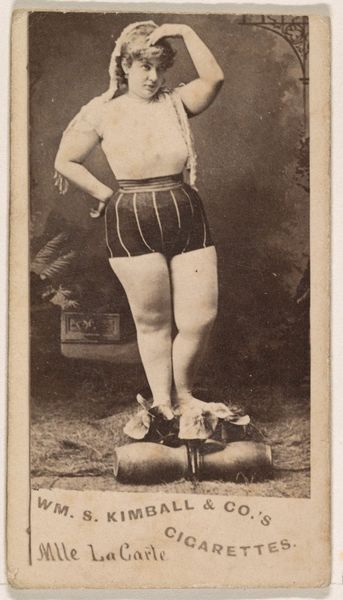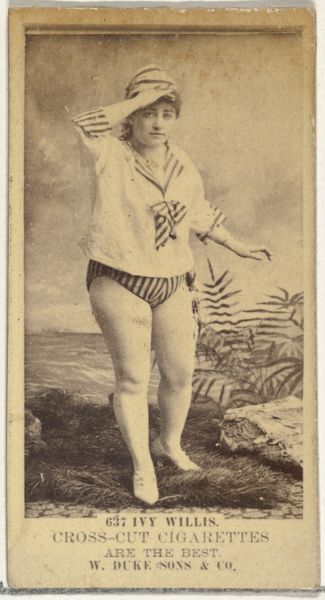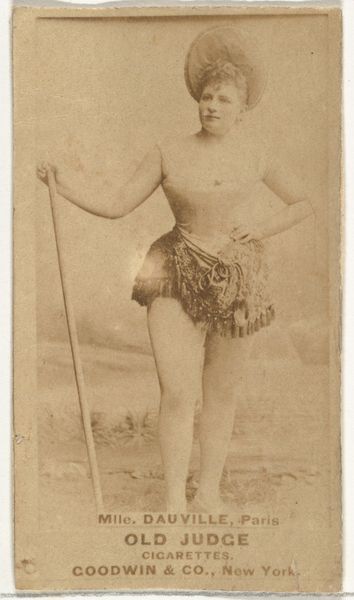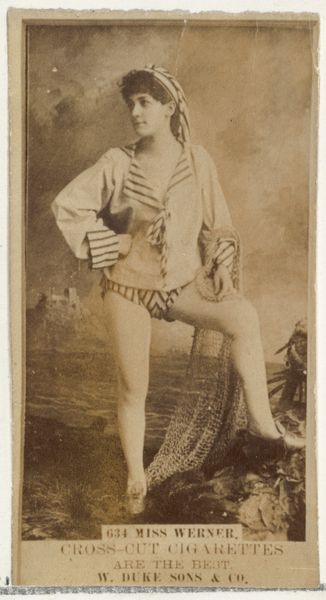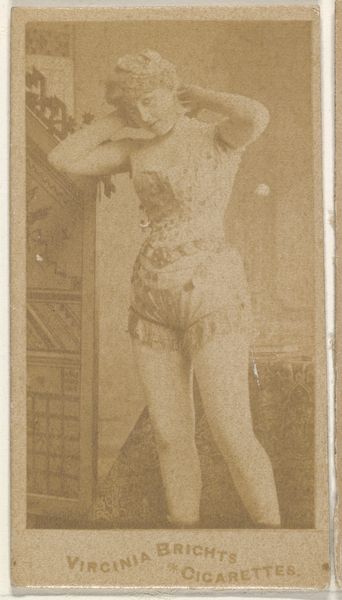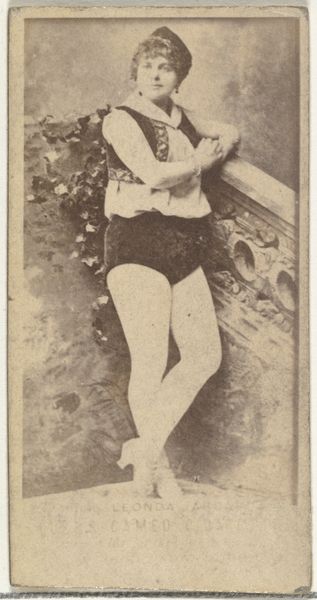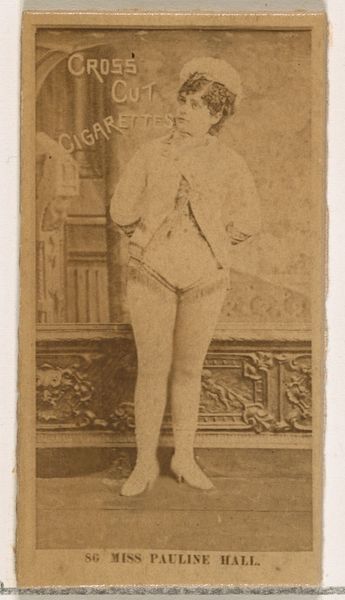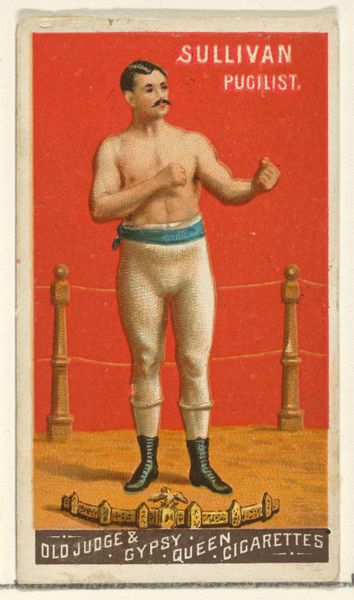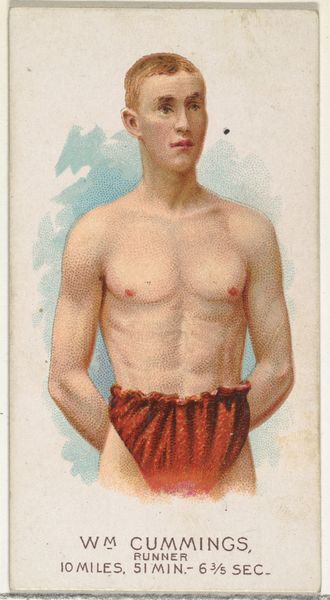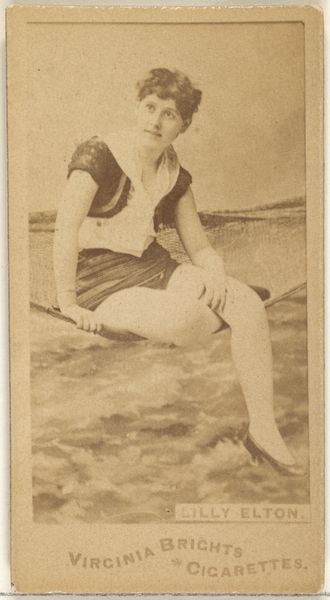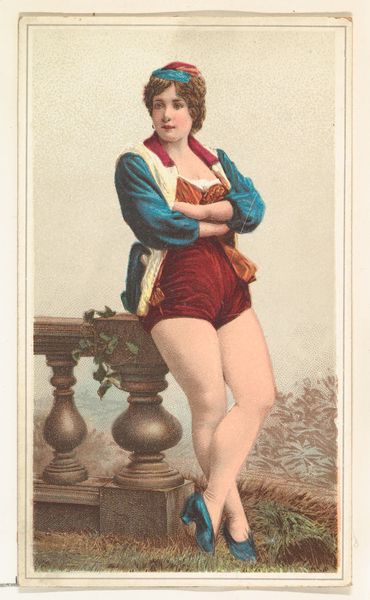
Joe Acton, Wrestler, from the Goodwin Champion series for Old Judge and Gypsy Queen Cigarettes 1888
0:00
0:00
Dimensions: sheet: 2 5/8 x 1 1/2 in. (6.6 x 3.8 cm)
Copyright: Public Domain
Curator: This is "Joe Acton, Wrestler" from the Goodwin Champion series for Old Judge and Gypsy Queen Cigarettes, a chromolithograph from 1888. It’s part of a larger set of trade cards featuring athletes, actors, and other celebrities, distributed in cigarette packs. What's your initial take? Editor: The image has a quaint charm, almost humorous. He is depicted as a performer on a stage with pastel pink stockings. There’s something vulnerable about his pose, his hands clasped behind his back. Curator: These cards were massively popular; part of a Victorian-era marketing strategy that also fed into a growing culture of celebrity and sports fandom. Joe Acton was, in his day, a notable catch wrestler. This medium offered accessible images that created almost an informal club for people who collected these images of contemporary idols. Editor: It’s fascinating how his pink-striped stockings play against the backdrop—the crossed banners, ropes and what looks like coat of arms. The colors feel both nostalgic and somehow audacious, contributing to an air of playfulness rather than raw competition. Curator: That elaborate heraldry symbol suggests aspiration, the wrestler rising in societal stature through his performances. But your initial observation about the "performance" of the spectacle is what gave these athletes the social status and subsequent advertising deals. What would otherwise have been an exclusively working-class occupation became a platform for financial growth in America. Editor: And yet, his almost doll-like stance undermines that narrative somewhat. I sense a tension, an almost naive rendering of masculinity alongside the more brazen implications of physical strength and national pride that the flags represent. Curator: These images existed as commodities, and the simplified presentation underscores that. It democratized representation but filtered it through an industrial lens that created ideals around physical performance that society might consume and attempt to inhabit. Editor: It prompts me to consider how ideals and idols evolve and how these fleeting commercial images inadvertently capture so much of the era’s underlying ambitions and contradictions. I appreciate that interplay and its lasting cultural imprint. Curator: Absolutely. Examining popular imagery gives us direct access to the aspirations and assumptions circulating through American culture at the end of the 19th century, opening discussions of marketing's role in constructing identity.
Comments
No comments
Be the first to comment and join the conversation on the ultimate creative platform.
